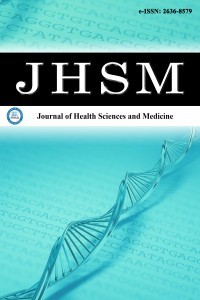1.
Şenkal E, Toprak S, Özbörü Aşkan Ö, et al. Effectiveness ofımmunity supporting drugs in preventing respiratory ınfections innursery children. Çocuk Derg. 2019;19(3):132-137. doi:10.5222/j.child.2019.76993
2.
Legislation Information System. https://www.mevzuat.gov.tr/mevzuat?MevzuatNo=39102&MevzuatTur=7&MevzuatTertip=5.Accessed June 13, 2023.
3.
Legislation Information System. https://www.mevzuat.gov.tr/mevzuat?MevzuatNo=1262&MevzuatTur=1&MevzuatTertip=3.Accessed June 13, 2023.
4.
Thomas KJ, Nicholl JP, Coleman P. Use and expenditure oncomplementary medicine in England: a population based survey.Complement Ther Med. 2001;9(1):2-11. doi:10.1054/ctim.2000.0407
5.
Cohen PA. Assessing supplement safety—the FDA’s controversialproposal. N Engl J Med. 2012;366(5):389-391. doi:10.1056/nejmp1113325
6.
Ernst E. Prevalence of use of complementary/alternative medicine:a systematic review. Bull World Heal Organ. 2000;78(2):258-266.
7.
Radimer K, Bindewald B, Hughes J, Ervin B, Swanson C, PiccianoMF. Dietary supplement use by US adults: data from the NationalHealth and Nutrition Examination Survey, 1999-2000. Am JEpidemiol. 2004;160(4):339-349. doi:10.1093/aje/kwh207
8.
Picciano MF, Dwyer JT, Radimer KL, et al. Dietary supplementuse among infants, children, and adolescents in the United States,1999-2002. Arch Pediatr Adolesc Med. 2007;161(10):978-985.doi:10.1001/archpedi.161.10.978
9.
Atalay D, Erge SH. Dietary supplements and their effects onhealth. Food Heal. 2018;4(2):98-111. doi:10.3153/FH18010
10.
Bailey RL, Gahche JJ, Miller PE, Thomas PR, Dwyer JT. Why USadults use dietary supplements. JAMA Intern Med. 2013;173(5):355-361. doi:10.1001/JAMAINTERNMED.2013.2299
11.
Garvey GJ, Hahn G, Lee R V., Harbison RD. Heavy metalhazards of Asian traditional remedies. Int J Environ Heal Res.2001;11(1):63-71. doi:10.1080/09603120020019656
12.
Kákosy T, Hudák A, Náray M. Lead intoxication epidemic causedby ingestion of contaminated ground paprika. J Toxicol ClinToxicol. 1996;34(5):507-511. doi:10.3109/15563659609028008
13.
Markowitz SB, Nunez CM, Klitzman S, et al. Lead poisoning due tohai ge fen. The porphyrin content of individual erythrocytes. JAMA.1994;271(12):932-934. doi:10.1001/jama.1994.03510360058037
14.
Dunbabin DW, Tallis GA, Popplewell PY, Lee RA. Lead poisoningfrom Indian herbal medicine (Ayurveda). Med J Aust. 1992;157(11-12):835-836. doi:10.5694/j.1326-5377.1992.tb141305.x
15.
Olujohungbe A, Fields PA, Sandford AF, Hoffbrand AV. Heavymetal intoxication from homeopathic and herbal remedies.Postgrad Med J. 1994;70(828):764. doi:10.1136/pgmj.70.828.764
16.
Agency for Toxic Substances and Disease Registry. https://www.atsdr.cdc.gov/index.html. Accessed July 26, 2023.
17.
US Pharmacopeia (USP). https://www.usp.org/ Accessed July 26, 2023.
18.
Legislation Information System. https://www.mevzuat.gov.tr/mevzuat?MevzuatNo=18532&MevzuatTur=7&MevzuatTertip=5.Accessed July 26, 2023.
19.
Turkozu D, Sanlier N. Current overview: heavy metalcontamination of food. Selcuk J Agric Food Sci. 2012;26(4):73-80.
20.
Yerli C, Cakmakcı T, Sahin U, Tufenkci S. The effects of heavymetals on soil, plant, water and human health. Turkish J Nat Sci.2020;9(Special Issue):103-114. doi:10.46810/tdfd.718449
21.
Costagliola G, Spada E, Comberiati P, Peroni DG. Couldnutritional supplements act as therapeutic adjuvants inCOVID-19? Ital J Pediatr. 2021;47(1):1-5. doi:10.1186/S13052-021-00990-0/TABLES/1
22.
Turksoy VA, Yalvac ES, Simsek OT, et al. Impact of zinc on birthand placental weight in cadmium and lead exposure duringpregnancy. Indian J Forensic Med Pathol. 2019;12(3):246-254.doi:10.21088/ijfmp.0974.3383.12319.15
23.
Ministry of Food A and L. Turkish Food CodexContaminants Regulation. https://www.resmigazete.gov.tr/eskiler/2011/12/20111229M3-8.htm. Published 2011. AccessedJanuary 15, 2022.
24.
Grzybowski A, Zülsdorff M, Wilhelm H, Tonagel F. Toxicoptic neuropathies: an updated review. Acta Ophthalmol.2015;93(5):402-410. doi:10.1111/AOS.12515
25.
Renu K, Chakraborty R, Myakala H, et al. Molecular mechanismof heavy metals (lead, chromium, arsenic, mercury, nickel andcadmium) - induced hepatotoxicity - a review. Chemosphere.2021;271:129735. doi:10.1016/J.CHEMOSPHERE.2021.129735
26.
Arslanbaş E, Baydan E. Common toxicosis in swine 2. metal,vitamin, pharmaceutical, pesticide and plant toxicosis. J LalahanLivest Res Inst. 2012;52(1):33-40.
27.
Rani A, Kumar A, Lal A, Pant M. Cellular mechanisms ofcadmium-induced toxicity: a review. Int J Environ Health Res.2014;24(4):378-399. doi:10.1080/09603123.2013.835032
28.
Al osman M, Yang F, Massey IY. Exposure routes and healtheffects of heavy metals on children. Biometals. 2019;32(4):563-573. doi:10.1007/S10534-019-00193-5
29.
Sherief LM, Abdelkhalek ER, Gharieb AF, et al. Cadmiumstatus among pediatric cancer patients in Egypt. Medicine.2015;94(20):e740. doi:10.1097/MD.0000000000000740
30.
Bose-O’Reilly S, McCarty KM, Steckling N, Lettmeier B. Mercuryexposure and children’s health. Curr Probl Pediatr Adolesc HealthCare. 2010;40(8):186-215. doi:10.1016/J.CPPEDS.2010.07.002
31.
Bernhoft RA. Mercury toxicity and treatment: a review ofthe literature. J Environ Public Health. 2012;2012:460508.doi:10.1155/2012/460508
32.
Trasande L, Schechter C, Haynes KA, Landrigan PJ. Applyingcost analyses to drive policy that protects children: mercury as acase study. Ann N Y Acad Sci. 2006;1076(1):911-923. doi:10.1196/ANNALS.1371.034
33.
Li Y, Lv H, Xue C, Dong N, Bi C, Shan A. Plant polyphenols:potential antidotes for lead exposure. Biol Trace Elem Res.2020;199(10):3960-3976. doi:10.1007/S12011-020-02498-W
34.
Qureshi MI, Abdin MZ, Qadir S, Iqbal M. Lead-induced oxidativestress and metabolic alterations in Cassia angustifolia Vahl. BiolPlant. 2007;51(1):121-128. doi:10.1007/S10535-007-0024-X
35.
Gürer H, Özgünes H, Saygin E, Environmental NE-A of, 2001 U.Antioxidant effect of taurine against lead-induced oxidative stress.Arch Contam Environ Toxicol. 2001;41(4):397-402. doi:10.1007/s002440010265
36.
Reuben A. Childhood lead exposure and adult neurodegenerativedisease. J Alzheimer’s Dis. 2018;64(1):17-42. doi:10.3233/JAD-180267
37.
Murata K, Iwata T, Dakeishi M, Karita K. Lead toxicity: Does thecritical level of lead resulting in adverse effects differ betweenadults and children? J Occup Health. 2009;51(1):1-12. doi:10.1539/joh.K8003
38.
Cohen MD, Kargacin B, Klein CB, Costa M. Mechanismsof chromium carcinogenicity and toxicity. Crit Rev Toxicol.1993;23(3):255-281. doi:10.3109/10408449309105012
39.
Chmatalova Z, Vyhnalek M, Laczo J, et al. Relation of plasmaselenium and lipid peroxidation end products in patientswith Alzheimer’s disease. Physiol Res. 2017;66(6):1049-1056.doi:10.33549/PHYSIOLRES.933601
40.
Zhang ZW, Wang QH, Zhang JL, Li S, Wang XL, Xu SW. Effectsof oxidative stress on immunosuppression induced by seleniumdeficiency in chickens. Biol Trace Elem Res. 2012;149(3):352-361.doi:10.1007/S12011-012-9439-0/FIGURES/9
41.
Elango S, Samuel S, Khashim Z, Subbiah U. Selenium ınfluencestrace elements homeostasis, cancer biomarkers in squamous cellcarcinoma patients administered with cancerocidal radiotherapy.Asian Pacific J Cancer Prev. 2018;19(7):1785-1792. doi:10.22034/APJCP.2018.19.7.1785
42.
Dinh QT, Cui Z, Huang J, et al. Selenium distribution inthe Chinese environment and its relationship with humanhealth: a review. Environ Int. 2018;112:294-309. doi:10.1016/J.ENVINT.2017.12.035
43.
Nuttall KL. Evaluating selenium poisoning. Ann Clin Lab Sci.2006;36(4):409-420.
44.
Gardiner MR. Chronic selenium toxicity studies in sheep. Aust VetJ. 1966;42(12):442-448. doi:10.1111/J.1751-0813.1966.TB14470.X
45.
Freake HC, Govoni KE, Guda K, Huang C, Zinn SA. Actions andinteractions of thyroid hormone and zinc status in growing rats. JNutr. 2001;131(4):1135-1141. doi:10.1093/JN/131.4.1135
46.
Willoughby JL, Bowen CN. Zinc deficiency and toxicity inpediatric practice. Curr Opin Pediatr. 2014;26(5):579-584.doi:10.1097/MOP.0000000000000132
47.
Prime Ministry Legislation Development and Publication GeneralDirectorate. https://www.resmigazete.gov.tr/eskiler/2011/12/20111229M3-8.htm. Accessed June 7, 2023.
48.
Korfali SI, Hawi T, Mroueh M. Evaluation of heavy metals contentin dietary supplements in Lebanon. Chem Cent J. 2013;7(1):10.doi:10.1186/1752-153X-7-10
49.
Minimal Risk Levels for Hazardous Substances | ATSDR. https://wwwn.cdc.gov/TSP/MRLS/mrlslisting.aspx. Accessed June 9,2023.

